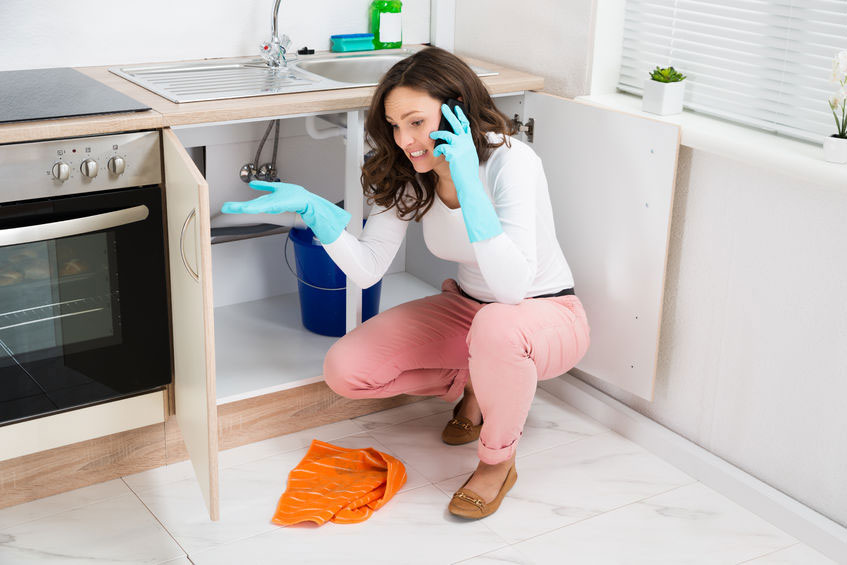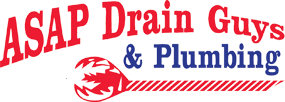
When a clogged drain interrupts your busy day you probably want to just pour drain cleaners into the drain and be done with it. Do-it-yourself drain cleaning is often worth a try, but is just as often a temporary or failed solution. Let’s consider which types are safe to use, and when it’s best to call a plumber.
Types of Chemical Drain Cleaners
Even the manufacturers of chemical drain cleaners recommend using them with extreme caution. They can indeed harm pipes as well as your skin, lungs, and hair. Risks include splashing or the release of hazardous gasses. It’s also important not to mix these products with any others (including cleansers and ammonia) as that can result in dangerous chemical reactions. Plus, they’re generally not effective on solid obstructions and are harmful to septic tanks. Other problems include the possibility that a partially dissolved clog gets lodged further down the drain or sewer line. But sometimes they’re well worth a try as a quick and convenient solution.
Lye
We do not recommend using caustic lye (potassium hydroxide or sodium hydroxide) based drain openers even though they’re frequently rated as “most effective.” Yes, they’re great at breaking down organic matter such as hair and they even convert grease into soap! But they’re very corrosive to pipes (including galvanized steel, copper, and iron) as well as fixtures and fittings. Lye drain cleaners also release heat (as do acid-based products) that softens and deforms plastic pipes. Never use them for a completely blocked drain, as they may well remain trapped long enough to do some serious damage.
Acid
Containing sulfuric acid or hydrochloric acid, these products are so hazardous that they’re not available on the consumer market. These products are certainly effective (and even dissolve paper along with grease and hair), but the most effective way of putting out a house fire is to bulldoze it down. As with lye-based products there’s a risk of personal injury and the slightest error in use turns drain cleaning into a plumbing repair.
Drain Cleaning Liquids
Although both alkali (lye) and acid products may come as liquids, the most common type of liquid drain cleaner is based on sodium hypochlorite (bleach) plus various cleaning, caustic, and anti-corrosion agents. They often contain thickening agents so that they sink in standing water. They’re relatively safe and often effective on hair in bathroom sinks and showers, not so much on kitchen sink drain clogs that contain grease. It may take a few tries, often a whole bottle for a single clog, but available at most grocery stores they’re certainly easy and convenient.
Alternatives
Here are a few more options for dealing with a clogged drain.
Enzymatic Products
This type of product is actually a specific bacterial culture that releases natural enzymes that in turn are effective in breaking down grease, fats, oil, and proteins (such as hair). They’re eco-friendly and biodegradable, and essentially your only choice if you have a septic tank. They’re not as popular as other choices primarily because they’re slow working. You need to let it sit overnight before flushing the drain, and it may take several treatments.
Baking Soda and Vinegar
If you don’t want to run to the grocery store you can try vinegar and baking soda. The basic steps are to pour boiling water into the drain, followed by baking soda and vinegar. Plug the drain a few minutes, then pour in more boiling water or hot water. You can find very detailed instructions at https://crunchybetty.com/
Taking the Plunge
A good old-fashioned plunger can also be effective on full clogs. You might also try an air-burst product for drain cleaning. They’re basically a canister of compressed gas (such as inert nitrogen or carbon dioxide) and a special release mechanism. But unlike a plunger they’re generally not recommended if there’s standing water.
Drain Snaking
If the problem continues to persist you could try doing your own drain snaking by renting or purchasing the right equipment. That can be strenuous and time consuming, and even professionals often leave behind enough grease and grime to soon lead to another clog.
Our Drain Cleaners Recommendations
We’re certainly not against do-it-yourself methods — they’re certainly worth a try. But we certainly recommend using safe products and keeping a plunger handy. Hopefully this article has explained what’s safe to use and pour into your drains.
If a few tries haven’t fully cleared the drain then it’s time to call a plumber. The same goes if the blockage is in the main sewer line. Many people don’t realize that all the drains and toilets in their home connect up to long large-diameter sewer pipe that goes out to city services. So if there’s a toilet back up or several fixtures have problems then it’s also time to call a plumber.

